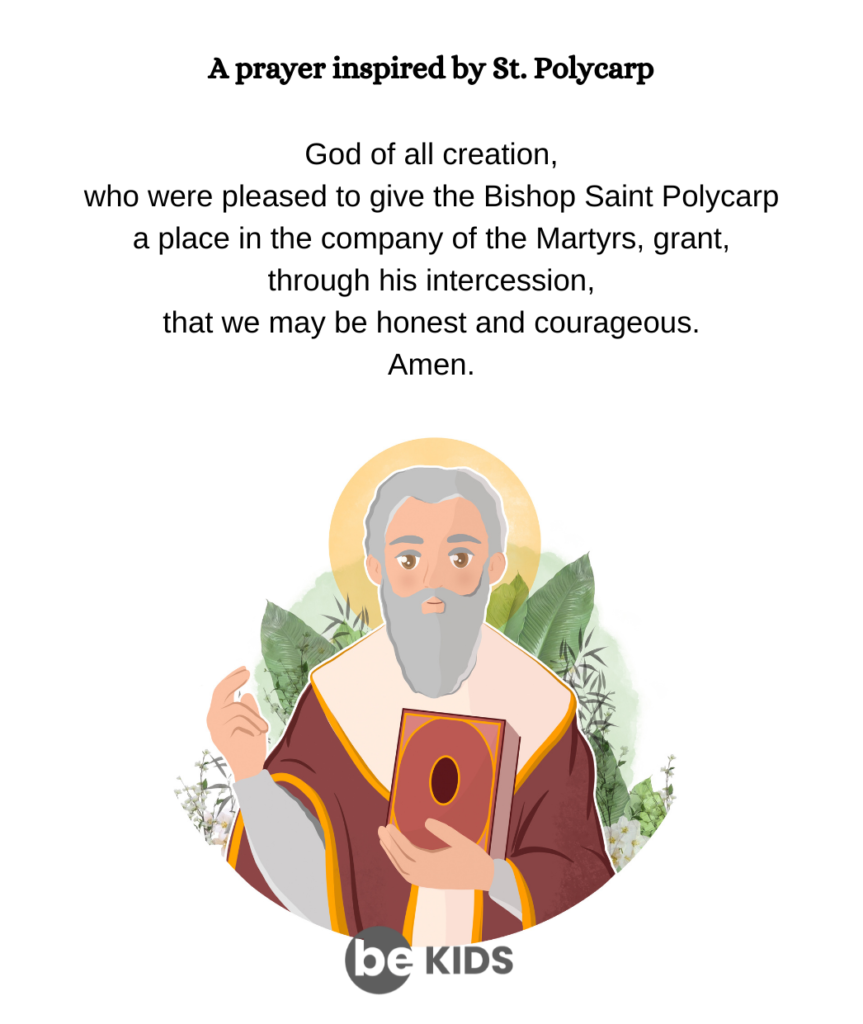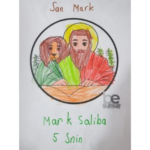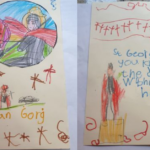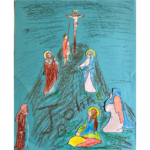
To meet St. Polycarp we have to travel back in time to AD 69. It is a time referred to as the Apostolic Age of the Church. It was the time when after the death and resurrection of Jesus, the Apostles started to travel to spread the Good News.
It is believed that it was about this time that St. Polycarp was born to a Christian family who had accepted the Faith from the Apostles themselves.
He was christened Pangratios not Polycarp! That came later.
He grew up fervent and staunch in the Faith. Tradition holds that he became a priest and a personal assistant to the Bishop of Smyrna. According to tradition, at one time, Smyrna and the surrounding countryside were suffering from such a severe drought that the people would not have survived much longer. Pangratios, together with his Bishop, led the community of Smyrna through a period of three days of prayer and fasting, praying for rain. Pangratios and a few others fasted for the three whole days. When the rains came and the land gave fruit, the people believed that God had answered the prayers and penance of Pangratios. From then on he became known as Polycarp meaning ‘many fruits’!
By the time he was 40 years old, Polycarp was appointed Bishop of Smyrna, (present day Izmir, Turkey). He became known for his kindness and generosity, avoiding conflicts, seeking peace-resolving attitudes even with other Christians when he travelled to Rome, in discussions over differences in the celebration of the Liturgy. He devoted most of his life defending the Faith. It is believed that he gained his strength in his beliefs having been a disciple of John the Apostle himself. His teachings were put down in a letter he allegedly wrote to the Phillipians, encouraging them to uphold their beliefs in the Christian Faith.
At this time a group of people known as Gnostics, started to spread contrary views to the teachings that had been handed down by the Apostles. Polycarp refuted these Gnostic heresies with all his strength for most of his adult life.
By the year 155AD, persecution of Christians had also reached Smyrna. Polycarp was accused of spreading the Faith and he was hunted out to be arrested. His friends persuaded him to seek refuge in a farm outside Smyrna. However he was discovered and was taken to an amphitheater where he was put on a pyre to be burned because he refused to renounce his belief in the One True God. It is said that the fire did not consume him and he was killed by the sword. It was then that the fire burned his body to ashes.
He was 86 years old.












